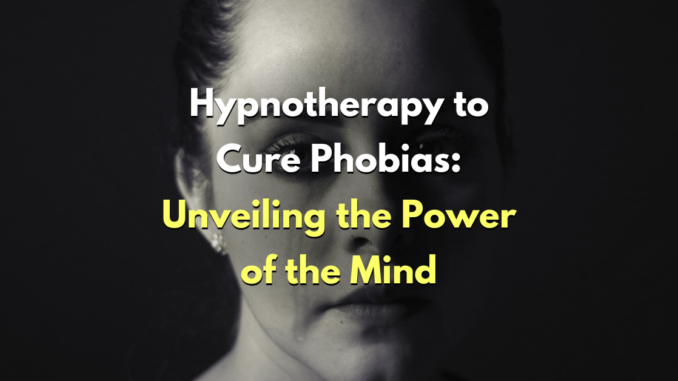
PART 1
Phobias are a type of anxiety disorder characterized by an intense and irrational fear of a specific object, situation, or activity. These fears go beyond what might be considered a normal or rational reaction and can lead to significant distress and avoidance behaviors. Phobias may interfere with a person’s daily life, relationships, and overall well-being. Phobias come in many different forms. Acrophobia is the fear of heights. Aviophobia is the fear of flying. Felinophobia is the fear of cats. Myxophobia is the fear of slime. Xyrophobia is the fear of razors. While some are well-recognized, others are unheard of, mostly because people not recognizing (or speaking up about them) them as some sort of disorder, but whatever is the case, the person suffering from it is living with fear and anxiety. Let’s understand the difference between Fear and Phobias. How to know if you have a phobia of certain things, or just afraid of that particular event/situation?
Fear vs. Phobia: Navigating the Spectrum of Anxiety
“Phobias involve the experience of persistent fear that is excessive and unreasonable. Phobias are cued when a person approaches a particular situation or object, or even anticipates the approach of it, and they understand the fear they will experience as a result of that situation will be unreasonable and excessive.” – Wilson, Don’t Panic.
Fear and phobia are two terms often used synonymously, yet they represent distinct levels of anxiety with differing impacts on our lives. Understanding the variations between fear and phobia can shed light on how these emotions affect us and guide us toward effective ways of managing them.
Fear: A Natural Response
Fear is a universal emotion, hardwired into our biology as a survival mechanism. It’s a rational response to a perceived threat or danger. When we encounter a potentially harmful situation, our body’s “fight or flight” response mechanism kicks in. This triggers a surge of adrenaline, sharpening our senses and preparing us to react quickly. Fear is temporary up to some degree. When fear intensifies for a long period of time it may convert into phobia of that particular event or object. Fear is a normal and necessary emotional part of our life, helping us navigate risky situations and make quick decisions to protect ourselves.
Phobia: The Intensification of Fear
On the other end of the spectrum lies phobia, which takes fear to an extreme and irrational level. Phobias are characterized by an intense, persistent, and often uncontrollable fear of a specific object, situation, or activity. Unlike ordinary fears that trigger a sense of caution, phobias evoke a paralyzing dread that can interfere with daily life.
Key Differences between Fear and Phobia:
1. Proportionality: Fear is a proportionate response to a real threat. Meaning, fear is a balanced response to an immediate threat. While phobia is an exaggerated and disproportionate fear of something that may not pose an immediate danger.
2. Impact: Fear can be a healthy response that keeps us safe, whereas a phobia can significantly impact our quality of life, causing distress, avoidance behavior, and disruptions in daily routines.
3. Triggers: Fear is triggered by actual or immediate danger. Like, finding yourself in front of a moving vehicle or a wild animal. Such situations trigger a “fight or flight” response. While phobia can be triggered by the mere thought or presence of the feared object or situation, even if there’s no actual threat.

4. Duration: Fear typically fades away once the threat is removed, whereas phobia can persist over a longer period, often leading to chronic anxiety.
5. Control: Fear can be managed through rational thinking and coping strategies, while phobia often feels beyond one’s control, leading to avoidance of particular situations or an object and heightened anxiety.
6. Specificity: Fear is usually related to a specific, clear and present danger, while phobia is specific to certain triggers and might not be rational or easily explainable by the person experiencing it.
7. Evolutionary Role: Fear is a crucial part of our evolutionary survival toolkit, as it helps us experience and learn which events/objects are harmful to our survival. While phobias can result from a combination of genetics, learned behaviors, and past experiences which sometimes are not easy to explain.
Three Major Categories of Phobias:
1. Specific Phobias: These involve a fear of a particular object, situation, or activity. Common examples include fear of heights: acrophobia, fear of spiders: arachnophobia, fear of flying: aviophobia, fear of enclosed spaces: claustrophobia, and fear of public speaking: glossophobia. People with specific phobias will often go to great lengths to avoid the feared object or situation.
2. Social Phobia: Also known as “Social Anxiety Disorder” This involves an intense fear of social situations and the fear of being negatively judged or evaluated by others. People with social phobia may avoid social gatherings, public speaking, and situations where they feel they are the center of attention altogether.
3. Agoraphobia: This is a fear of being in situations or places where escape might be difficult or where help might not be available if a panic attack or other emergency occurs. Agoraphobia often leads to avoiding situations such as crowded places, public transportation, and being far from home.
Various Types of Phobias:
Alektorophobia: Fear of chickens
Bogyphobia: Fear of bogeys or the bogeyman
Coulrophobia: Fear of clowns
Dendrophobia: Fear of trees
Euphobia: Fear of hearing good news
Frigophobia: Fear of cold or cold things
Geniophobia: Fear of chins
Homichlophobia: Fear of fog
Isopterophobia: Fear of termites, insects that eat wood
Japanophobia: Fear of Japanese
Kosmikophobia: Fear of cosmic phenomenon
Lutraphobia: Fear of otters
Mnemophobia: Fear of memories
Novercaphobia: Fear of your stepmother
Ophthalmophobia: Fear of being stared at
Paraskavedekatriaphobia: Fear of Friday the 13th
Ranidaphobia: Fear of frogs
Sciophobia: Fear of shadows
Textophobia: Fear of certain fabrics
Urophobia: Fear of urine or urinating
Verbophobia: Fear of words
Wiccaphobia: Fear of witches and witchcraft
Xanthophobia: Fear of the color yellow or the word yellow
Zemmiphobia: Fear of the great mole rat
Managing Fear and Phobia:
When it comes to fear, recognizing and addressing the underlying threat can help us respond appropriately and take responsible actions. On the other hand, phobias may require more intensive interventions, such as hypnotherapy, cognitive-behavioral therapy (CBT), exposure therapy, or, in severe cases, medication. Phobias can develop due to a variety of factors, including genetics, traumatic experiences, learned behaviors, and cultural influences. While fear and phobia both involve an element of anxiety, they exist on a spectrum. Fear is a natural and adaptive response, while phobia represents an intensified and often irrational form of fear that can disrupt our well-being. By understanding the differences, we can better navigate our emotions and take steps toward living a more balanced and fearless life.
In the next part, we will take a deep dive into three categories mentioned in this part and see “How Hypnotherapy Cures Chronic Phobias”.

Leave a Reply